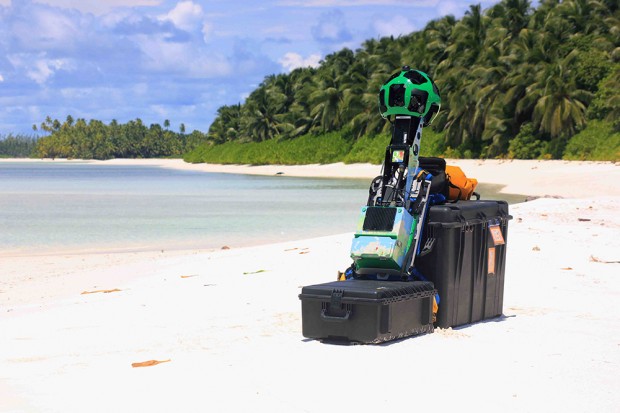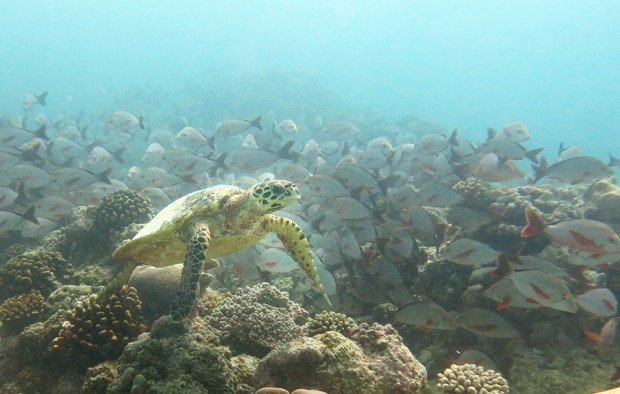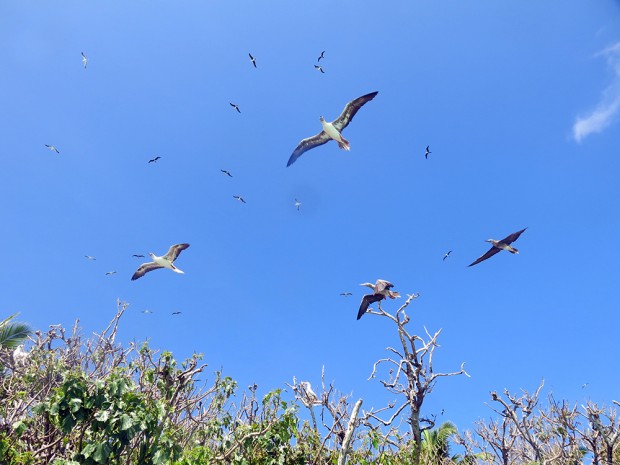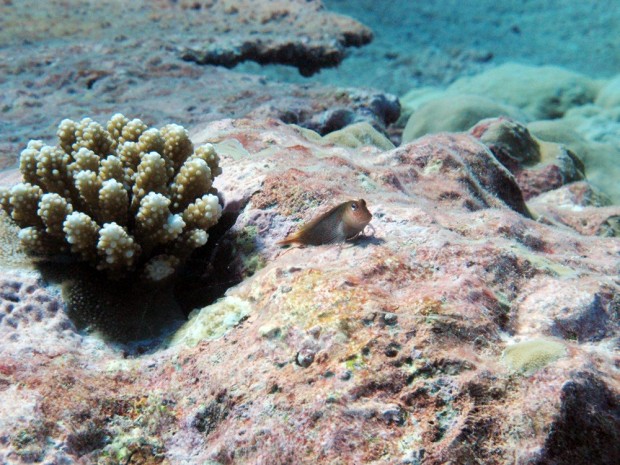2015 Darwin Science Expedition - Day 8 A day off from diving… islands awaits!

On this day some of us took a break from being in the water which is recommended to allow ones body a rest from being saturated at pressure while scuba diving. I made the most of this opportunity to carry the Google Trekker camera on to Ile Grand Mapou and Ile Petit Mapou. These adjacent islands in the north west of Peros Banhos are very scenic but were also once coconut plantations. As a result they are vegetated with a coconut monoculture and also inhabited by rats. This combination is not very favourable for seabirds who find it difficult to nest and roost in the unstable palm branches and also do not like being harrassed by rats. For me this meant less seabirds to view while I went round the islands but for Nick and Shaun it is an important aspect of their research. Shaun outlines the thrust of their research below.

Seabirds such as red footed boobies, sooty and fairy terns are common around the Chagos Archipelago where they can be seen gliding above the sea often diving into the water and plucking out small fish for their supper. These birds can also be seen on many of the islands where they roost and nest. Whilst on islands droppings from the nesting and roosting seabirds slowly accumulate, enriching the typically sandy island soil with nutrients. On some Islands the introduction of rats and changes in vegetation has however drastically reduced bird numbers. This has important and obvious implications for bird conservation, but reduced bird droppings will also affect nutrient levels on the island which may have flow on effects to the adjacent coral reefs.

Our project is investigating if the nutrients that seabirds aggregate onto islands from their droppings are transferred into the reef system. We expect that Islands with seabirds should have nutrient signatures in the soils and plants that differ to those without seabirds. If the nutrients are being transferred onto the adjacent coral reefs, the nutrient signatures from terrestrial plants should be similar to those of the algae, sponges and fish on the nearby reef flats and crests. We also assess the composition of the reef habitats and estimate the abundance of fish to see if nutrients from seabird droppings influence coral and fish communities. Our results should improve understanding of how changes in land based management influence both birds and the flow on effects for reefs. For example, removing rats from islands may have the potential to not only improve bird numbers, but also enhance the productivity of surrounding coral reefs.

Seabirds above and on Grand Coquillage
Coral reef fish represent some of the most diverse vertebrate assemblages in the world. Within these assemblages small bodied species are particularly abundant, however small size, colouration and behaviour make many of these fishes cryptic and difficult to study.

The slaraiin blennies are a major part of this cyptobenthic fish assemblage on coral reefs. They are commonly known as the combtooth blennies, due to their elongate, flexible teeth which they use to brush loose detrital material (decaying organic matter) from the reef surface. With the exception of a few species, detritus makes up most of a combtooth blennies diet and because blennies are often in high abundance on shallow reefs, they are important consumers of detrital material in this area. Moreover, as most blennies have short life spans (less than a year) and are eaten by larger predators, they represent an important link between reef detritus and higher levels of the food web.
On the reefs of Chagos 25 species of blenny have been recorded, although only 14 of these are comb tooth blennies. We are currently estimating the abundance of these blennies on the shallow lagoonal reefs that surround islands with or without birds in the Chagos Archipelago. This is an extension of the above project that explores how nutrients from bird droppings may be transferred to the adjacent reefs. Blennies are of interest because detritus enriched with nutrients from bird droppings might support larger numbers and bigger fish.

Blennies of the genus Cirripectes are common on the shallow reefs of Chagos

